The Roman Senate. Unveiling the power and intrigue behind the most powerful body of the Roman Empire.
The Roman Senate, the esteem body of the Roman Empire that wielded significant influence over public finances, military endeavors, and foreign relations.
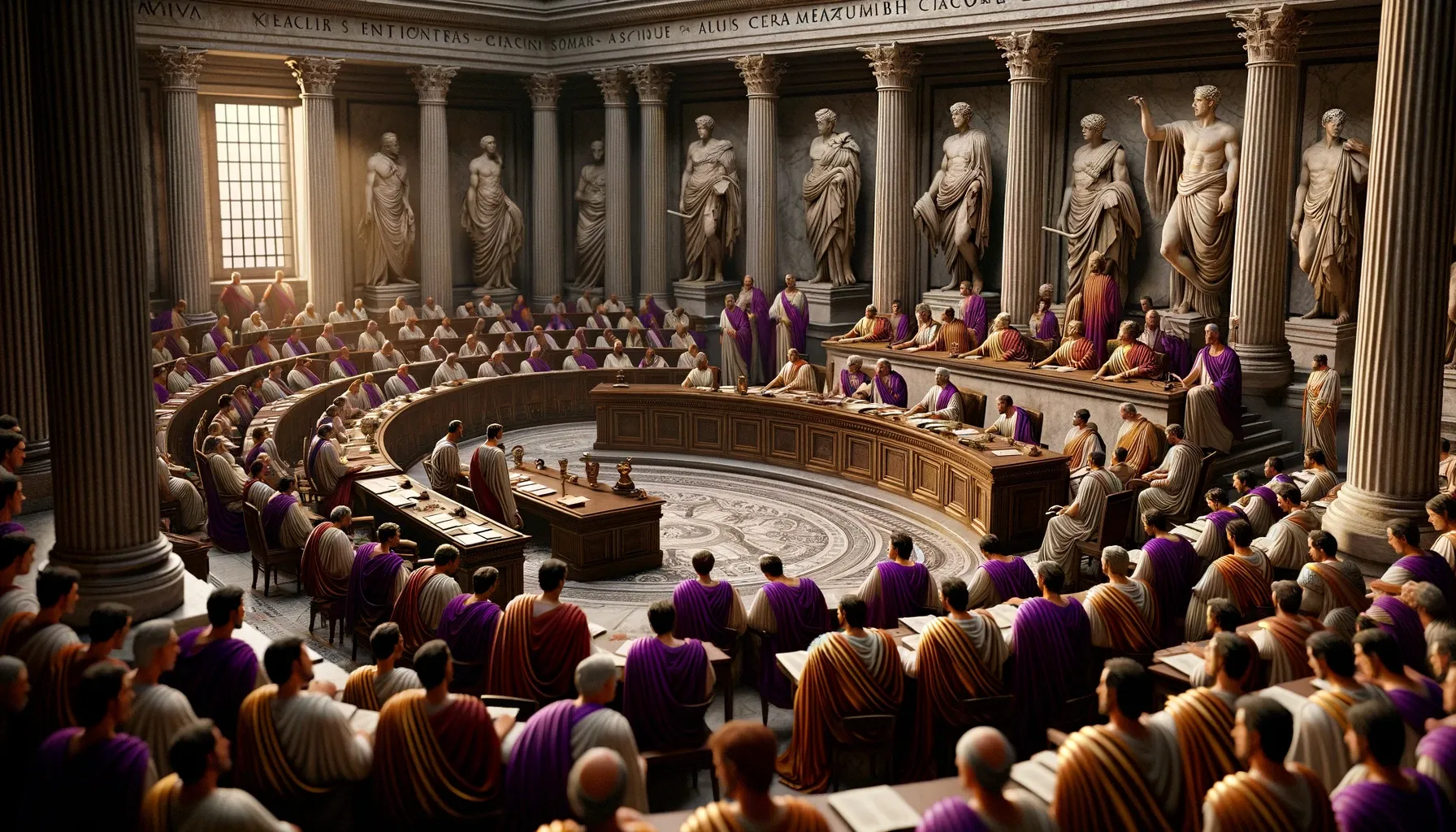
At the heart of ancient Rome's political machinery, the Roman Senate stood as a testament to governance, strategy, and the complexities of power. This esteemed body, which began as an advisory council for kings, evolved into the Republic's backbone, influencing legislation, foreign policy, and the financial affairs of one of history's most formidable empires.
Origins and Evolution
The Senate's roots trace back to the early days of Rome, around 753 BCE, under the reign of Romulus. Initially comprising 100 men of noble lineage, its numbers swelled to 300 under the Tarquins, laying the foundation for a political institution that would endure for over a millennium. The Senate's composition, primarily patrician, gradually opened to include plebeians, reflecting Rome's shifting social dynamics.
The Senate, functioned as a consultative body for the king. It is believed to have been initially composed of elder statesmen (senes), whose wisdom and knowledge of tradition were invaluable in a society without written records. In the republic era, the Senate's ranks were filled by representatives of leading families. Its exact size in the early republic remains unclear, but by the middle republic, it is thought to have comprised around 300 members, known collectively as patres et conscripti, indicating a mix of two distinct groups. The term "patrician" originates from patres, hinting at an early division between the patrician and plebeian classes.
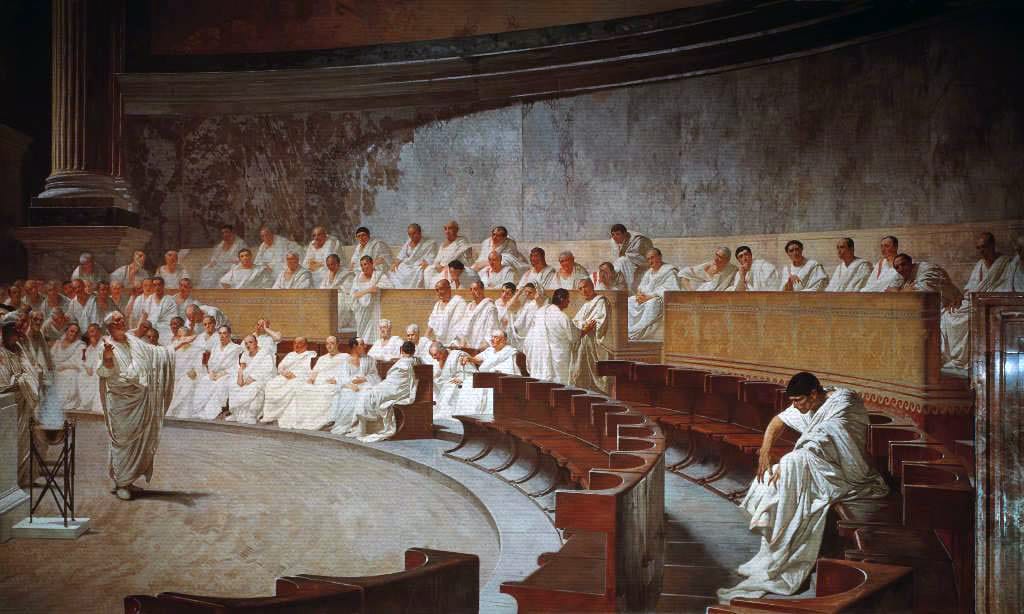
Within the republic, the Senate's role was to provide counsel to both the magistrates and the Roman populace. Though theoretically the people held ultimate authority, in practice, the Senate's influence was profound due to its members' collective prestige. It stood as the preeminent body for debate and decision-making in the Roman state, convened by a magistrate who presented issues for its consideration. A majority vote resulted in a "senatus consultum", an advisory decree aimed at magistrates or the Roman citizenry. Typically, these decrees were executed by a magistrate or proposed to the people to be formalized as law.
Function and Power
As Rome transitioned from monarchy to republic, the Senate's role expanded. It wasn't a legislative body in the modern sense but wielded significant influence over public finances, military endeavors, and foreign relations. Senators, Rome's elite, served for life, bringing a wealth of experience and continuity to the state's governance.
Magistrates, elected by the Roman people, executed the Senate's decrees, though the Senate controlled their provinces' assignment and the military forces' distribution. The Senate's authority peaked during the Republic's middle period, dictating Rome's domestic and international policies.
The centuriate assembly's development during the early republic is only understood in its final form due to limited historical records. Initially, it might have functioned as a military gathering where citizens, armed for battle, elected their leaders and made critical decisions about war and peace. By historical periods, the assembly had adopted a sophisticated structure where all eligible voters were categorized into one of five economic classes based on their wealth. This classification determined the allocation of centuries, or voting units, with the assembly totaling 193 centuries.
The wealthiest citizens in the first class were divided among 80 centuries, while the second through fourth classes each received 20 units. The fifth class, representing the poorest members of society, was assigned 30 centuries. Additionally, there were 18 centuries for knights, individuals affluent enough to provide their own cavalry equipment, and five other centuries, including one for the proletarii, who were too impoverished to serve in the military.
The knights and the wealthiest class, holding 98 centuries together, held significant influence within the assembly, despite being a minority of the population. This arrangement ensured that wealthier citizens had more authority, cementing the political dominance of the established nobility. The assembly's structure was intentionally designed to favor the affluent, reinforcing the societal hierarchy.
The Senate's Setting
The Curia, the Senate's meeting place, was not just a physical space but a symbol of Rome's enduring legacy. Situated in the Roman Forum, the heart of Roman public life, it witnessed the Republic's pivotal debates and decisions. Within its walls, senators adorned in the tunica clavata, a tunic with a purple stripe indicating their status, convened to deliberate the empire's fate.
Senate sessions were permitted both within and just beyond the city's sacred boundary, the pomerium, but never further than a mile outside it. There were occasions when the Senate convened outside the city's official limits for specific purposes. One such reason was to hold discussions with individuals, like foreign diplomats, whom they preferred not to admit into the city.
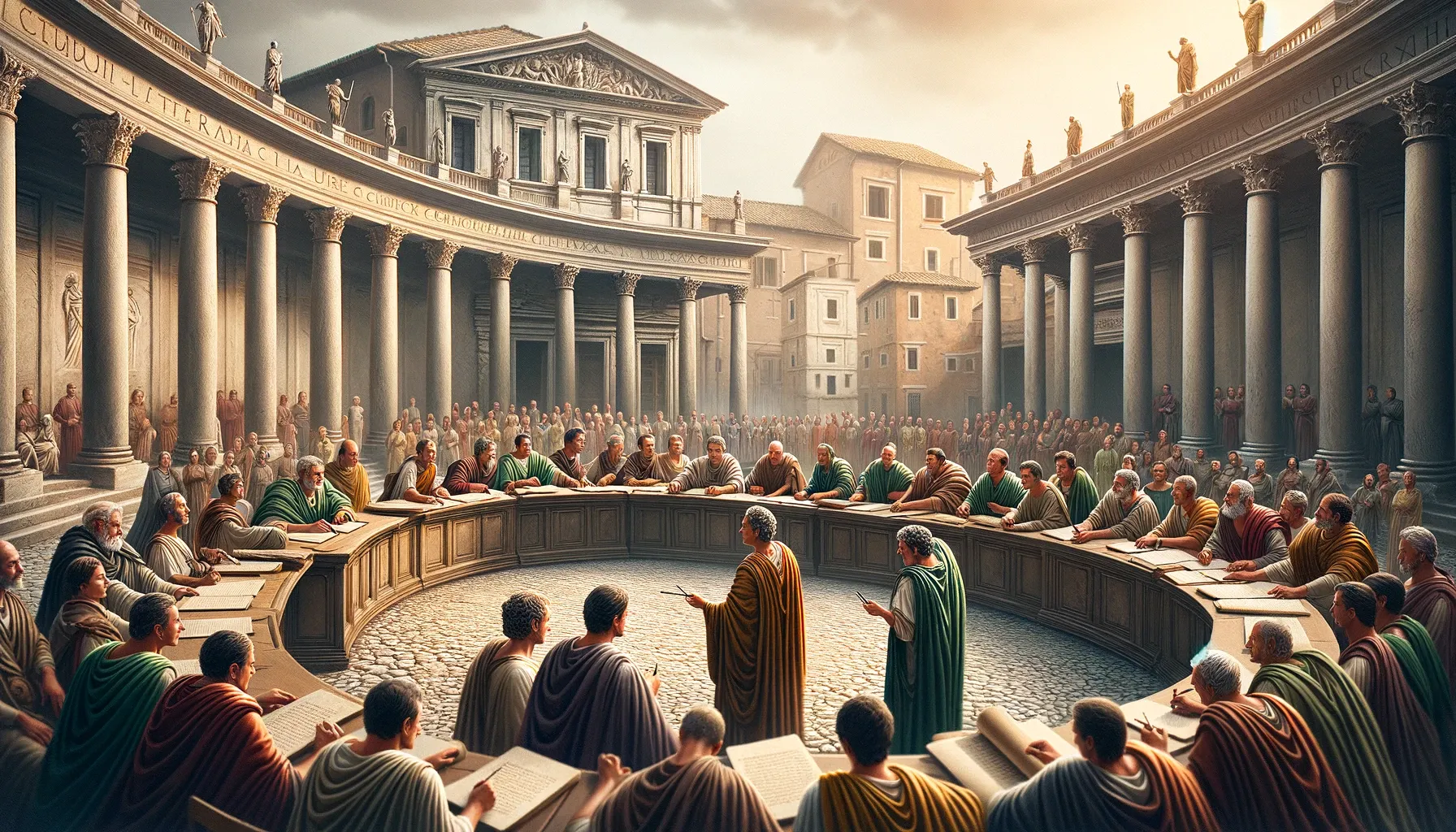
The inaugural Senate session of each year traditionally occurred at the Temple of Jupiter Capitolinus, with subsequent meetings potentially held at the Temple of Fides, the Temple of Concord, or, for gatherings outside the city's formal limits, at the Temple of Apollo or the Temple of Bellona for military discussions. The Senate's operations were also subject to religious protocols; each meeting commenced with a sacrificial offering to the deities, followed by a consultation of divine signs (the auspices) to ascertain the gods' approval of the meeting. Meetings were mandated to convene in spaces of religious importance, such as the Curia Hostilia, reinforcing the sacred nature of their deliberations.
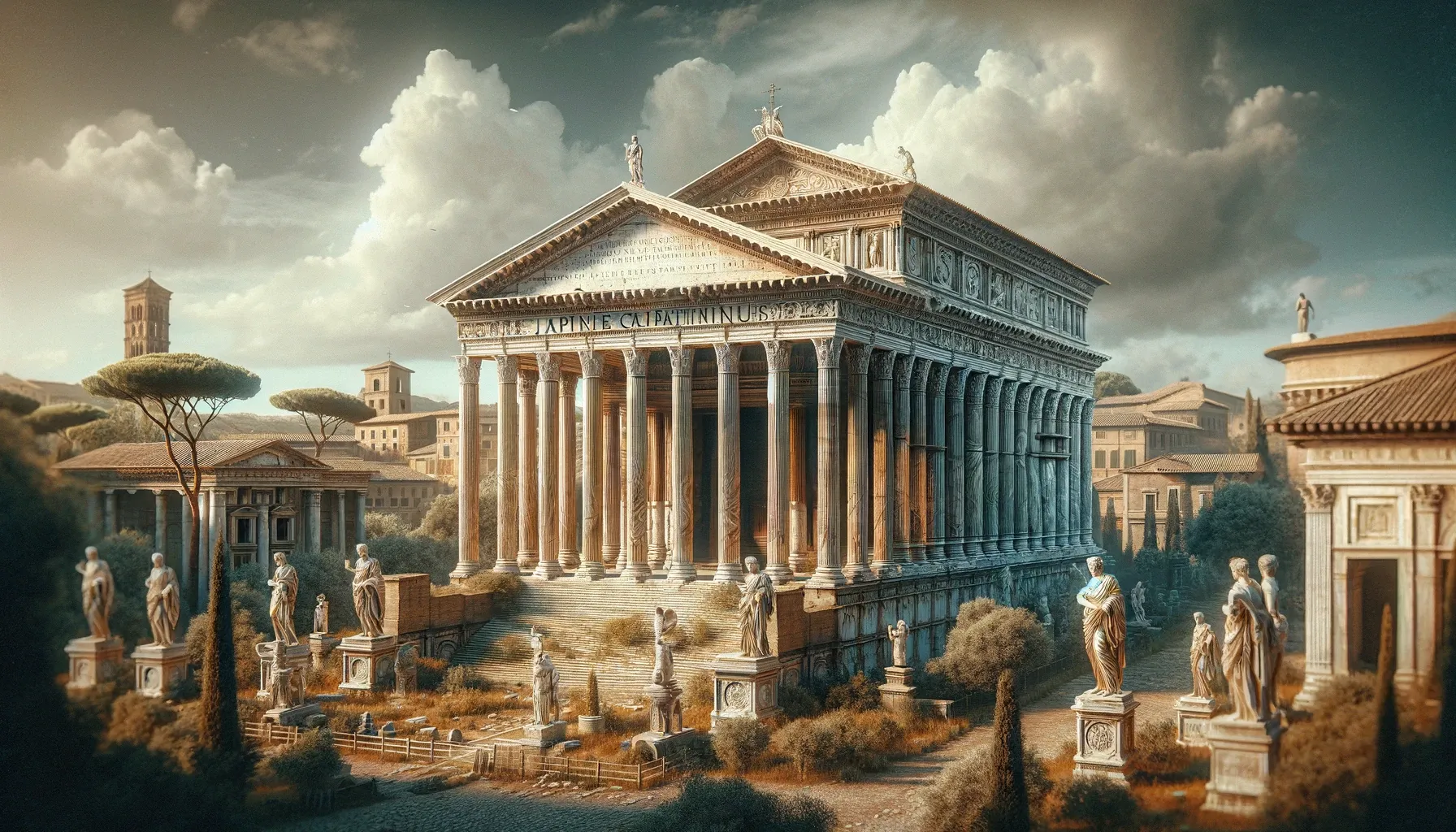
Debates and Decision-Making
The Senate's proceedings were characterized by structured debates, where seniority dictated speaking order. Persuasion, rhetoric, and oratory prowess were essential, with figures like Cicero and Cato the Elder leaving indelible marks on Roman Empire's history through their speeches. The Senate's decisions, or "senatus consulta", though technically advisories, carried the weight of law, reflecting the Senate's central role in governance.
Powers and Limitations
The Senate's power was immense, overseeing Rome's budget, approving construction projects, and declaring war or peace. Yet, it wasn't without limitations. The Assembly could check its decisions, and the rise of popular generals like Julius Caesar challenged its authority, culminating in a shift towards imperial rule. The Senate's influence waned under the Empire, serving more as a body of advisement to the emperor than the Republic's governing force.
The Roman Senate, with its rich traditions, political machinations, and pivotal role in shaping the empire, stands as a monument to Rome's glory and the frailties of power. Its members, the setting of their debates, and the decisions that flowed from the Curia's halls, offer a window into the soul of Rome, revealing a world where ambition, public duty, and the fate of an empire were inextricably linked. Through the Senate, we gain insight into the ancient world's political landscape, understanding not just the mechanics of Roman governance but the enduring influence of Rome's legacy on the modern world.








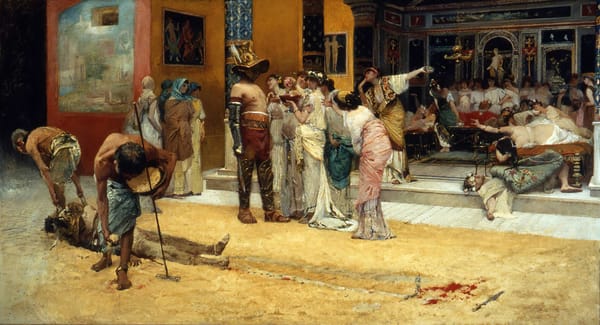
About the Roman Empire Times
See all the latest news for the Roman Empire, ancient Roman historical facts, anecdotes from Roman Times and stories from the Empire at romanempiretimes.com. Contact our newsroom to report an update or send your story, photos and videos. Follow RET on Google News, Flipboard and subscribe here to our daily email.
Follow the Roman Empire Times on social media: